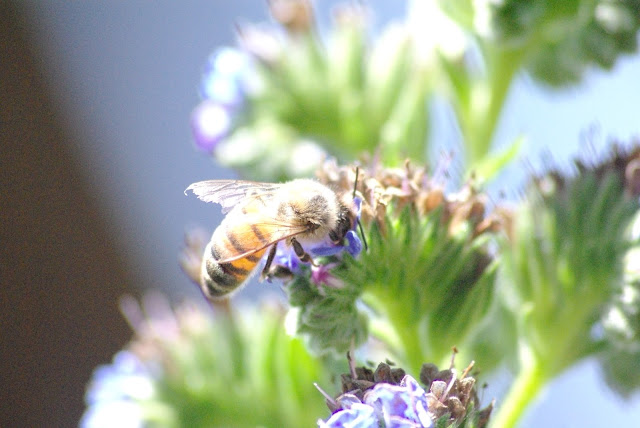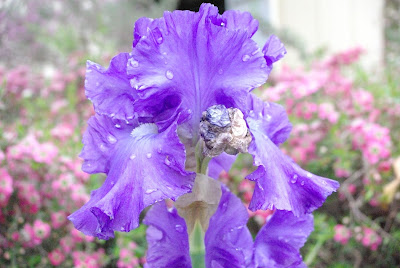Did you know that about a third of our food plants worldwide are pollinated by bees? It is no exageration to say that without bees there would be a food crisis of massive proportions, even in the developed world.
The October garden is in full bloom and bees are buzzing industriously from plant to plant. Native wax flowers, echiums and both white- and pink-flowered leptospermums are favoured this month. In the summer they will be attracted to the buddleias and lavenders. Bees see colours differently from humans and are especially attracted to intense blue and purple colours, but right here, right now, they have no problem collecting enough pollen from the many white flowers in bloom in my garden.
Plants depend on bees and other pollinating inserts to transfer pollen from the anther (male part of flower) to the stigma (female part of flower) so seeds can develop, the plant can reproduce and and the species survive. In return, the pollinating insect gets nectar and/or pollen, high-energy foods that it needs for its own survival. Plants and their pollinating insects have developed some amazing relationships, some of which are so interdependent that the one could not survive without the other.

The bees buzzing around my garden perform a free service for me as they collect their bounty from the flowers. Many of them pollinate my fruit trees and vegetable crops. When the fruit trees are in blossom, I watch with interest as the bees work the flowers, filling their pollen sacs with nutritious pollen to take back to the hive. (See the full pollen sac visible in the photo above.) I know that in a few months time I will be enjoying peaches, nectarines, plums, apricots and strawberries as a result of their work.
I grow lavender in the vegie garden to ensure that enough bees are attracted to the area to pollinate pumpkins, cucumbers, zucchinis and other crops. Borage is another plant that bees seem to love and that can easily find a place in the vegie garden.
The value of bees to humans cannot be overstated. To attract bees to your garden, plant some of the flowers mentioned here and avoid using insecticides, which kill bees and other beneficial insects as well as pest insects.
My three-year-old granddaughter Ellie has recently discovered her first imaginary friend, a bee called Bumblebee. Perhaps she has no conscious knowledge of how apt it is to think of bees as friends, but maybe she is displaying a core of inner wisdom that many adults seem to lack.
My recently released book
Gardens For All Seasons has a section titled 'Pollinate or Perish', in which I discuss in much more detail the role of pollinating insects, their importance, and some fascinating flower/pollinator relationships, some of which still leave me astounded. You can see sample pages and a short video about the book at:
www.publish.csiro.au/pid/6807















